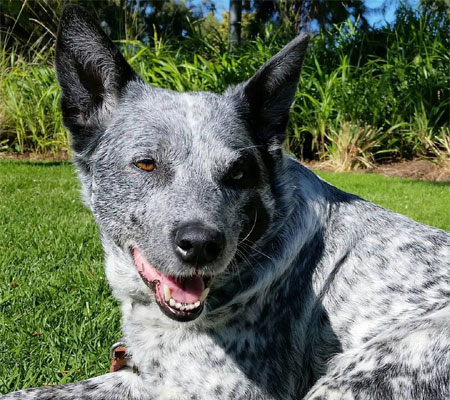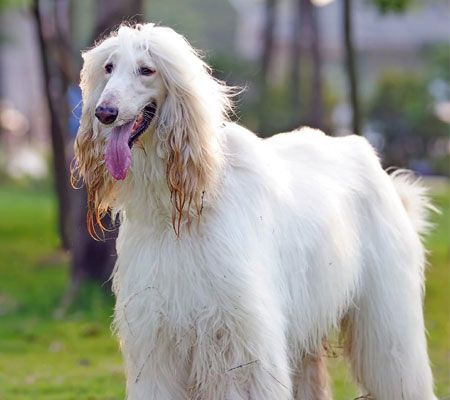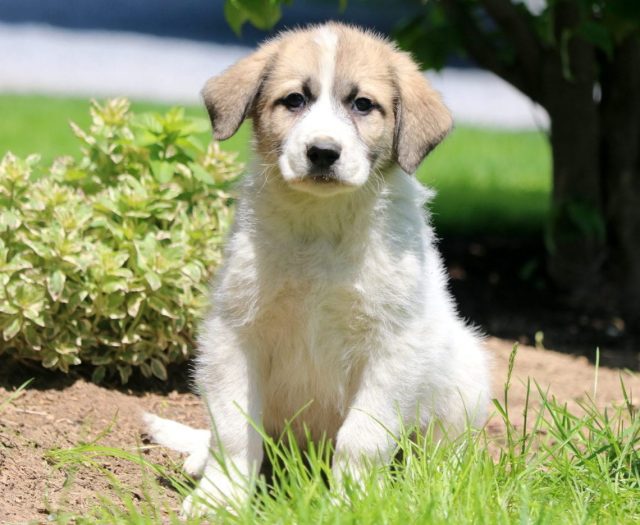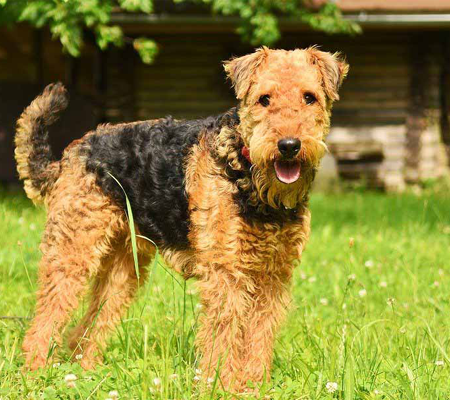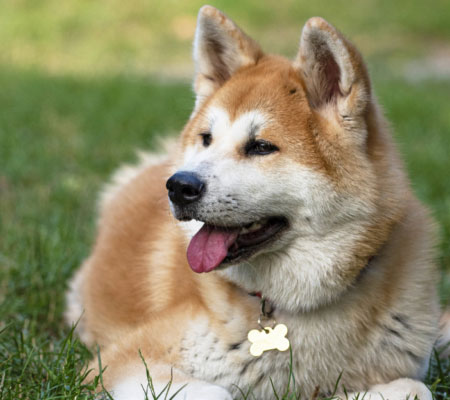The Australian Stumpy Tail Cattle Dog is a
descendent of wild dingoes and tamed herding dogs from the late 1800s, known
for its unique short or non-existent tail. The Australian Stumpy Tail Cattle
Dog is slimmer, tailless, and more attentive when it comes to strangers and
unfamiliar circumstances than the popular Australian Cattle Dog.
Stumpy, Stumpy Tails, and Heelers are some of the
nicknames for this bob-tailed breed. Despite the fact that they are purebred
dogs, they may still be found at shelters and rescues. Keep in mind to adopt!
If this is the breed for you, don't go shopping.
This energetic and clever breed has a lot of
energy to expend and needs a lot of room to do so. The Australian Stumpy Tail
Cattle Dog is best suited to adult families or those with older children who
have access to a fenced yard. If you want an active companion and have the
patience to teach them consistently, this is the breed for you!
Australian Stumpy Tail Cattle Dog Highlights
Breed Size
Medium
Nature
Gentle, Friendly, Playful, Outgoing, Willful
Energy Level
Hyper
Intelligence
High
Barking Level
Howler
Coat Length
Short, Medium, carly
Breed Group
Working
Droll Amount
Low
Good with
Familes, Children, Dog
Feed Level
Medium, High
Colour Type
Red speckle, Blue, Blue & Black
Other Facts
High prey drive,strong loyalty tendencies,good hiking companion.
Dog History
Although the breed's origins aren't fully
established, the Australian Stumpy Tail Cattle Dog is said to be the oldest
domesticated breed unique to Australia. Researchers think that during the 18th
century, British colonists crossed their herding dogs with wild dingoes.
Because the sheepdogs imported by the British couldn't stand the heat, breeders
attempted to produce a breed that combined the dingo's protective coat with
their sheepdogs' herding abilities.
The Australian Cattle Dog and the Australian
Stumpy Tail Cattle Dog are descendants of their predecessors. Separate breeds
resulted from selective breeding, and the Stumpy came close to extinction in
the twentieth century.
18-22 inch 18-25 kg 13-15 year
Height

Weight

Life Span
Health and Care
- Australian Stumpy Tail Cattle Dogs are typically
healthy, although they, like other breeds, can develop health problems.
Although not all Heelers will contract any or all of these illnesses, it's
vital to be aware of them if you're thinking about getting one.
- The following are some of the most prevalent
health issues that Australian Stumpy Tail Cattle Dogs face:
- Issues with the eyes (including Collie Eye
Anomaly)
- Hip Dysplasia is a condition that affects the hip
joint.
- Deafness
- You should take your Australian Stumpy Tail
Cattle Dog to the vet on a regular basis, just like any other dog, to catch any
health problems early. Your veterinarian can assist you in developing a care
routine for your dog that will keep him healthy.
- Weight increase is common in Australian Stumpy
Tail Cattle Dogs, and they have a high level of activity. Make sure your dog
gets two half-hour to hour-long walks each day, with a few nice, energetic play
sessions and shorter walks thrown in for good measure. If the weather permits,
you may also let your Stumpy run around in the backyard to burn off some
energy.
- Check their ears for dirt and vermin on a regular
basis, and clean them according to your veterinarian's instructions. Once or
twice a month, trim your dog's nails before they become too long. They
shouldn't be slamming into the ground. This is something that your groomer can
assist you with.
- Maintain the dental health of your Australian
Stumpy Tail Cattle Dog. Brush their teeth on a regular basis. Your veterinarian
can show you how to properly brush your dog's teeth.
Dog Breed Care Tips and
Important Instructions
Caring for your Australian stumpy tail cattle dog
is rather simple, aside from giving appropriate mental and physical activity.
She doesn't necessitate a great deal of grooming. In reality, she only has to
be groomed once a week with a slicker and a little tooth comb to maintain her
coat in good shape, and she only needs to be bathed when she becomes muddy.As
with other dogs, make sure your stumpy's ears are clean, her teeth are washed
frequently, and her nails are cut at home.
Stumpies are good at training because of their
intelligence and devotion, especially when they have a set pattern to follow.
When you bring home an Australian stumpy tail cattle dog puppy, according to
Burleson, the first thing you should do is develop a schedule. Have your stumpy
sit until you've cleared the entryway and are ready to leave, for example, when
you walk out the front door. Your stumpy, like other dogs, will benefit from
frequent and positive reinforcement training throughout her life.
Feeding
A diet for an Australian Stumpy Tail Cattle Dog
should be designed for a medium-sized breed with a lot of energy. This Heeler
is prone to gaining weight if he is not properly exercised. Rather of putting
food out all the time, measure their food and feed them twice a day to keep
your Stumpy in excellent form. Also, keep goodies to a minimum.
The nutritional requirements of the Australian
Stumpy Tail Cattle Dog will alter from puppyhood to adulthood, and will
continue to evolve into their senior years, as they do with all dogs. Because
there is just too much variance among individual dogs—including weight, energy,
and health—to offer a particular prescription, you should seek your
veterinarian for advice on your Australian Stumpy Tail Cattle Dog's diet.
Fun Facts
- Didjah, a 5-year-old stumpy, had his film debut in 2011 with the film Thin Ice.
- It is Known by Several Names
- It is Related to the Dingo
- It Has Been Recognized as a Breed Since 1988
- Some Have a Tail
- They Come in Two Color Varieties
- They Compete in Sports
- They Make Good Family Pets
- It is Classified as Either a Herding or Working
Dog
- They Need Lots of Exercise but Little Grooming
- They Don’t Have Many Health Issues
- Despite the fact that the Australian stumpy tail cattle dog was the country's first dog breed, puppies didn't arrive in the United States until after World War II.
Home Training Tips and General
Information
When teaching your Australian Stumpy Tail Cattle
Dog puppy, it's critical to show gratitude and provide positive reinforcement.
You should never yell at or penalise your Australian Stumpy Tail Cattle Dog for
not listening – positive reinforcement is the greatest way to train your
Australian Stumpy Tail Cattle Dog.
Instead of patting your Australian Stumpy Tail
Cattle Dog on the top of their head or back, give them a pat on the underside
of their chin or chest, which is more loving for them.
Long sessions of training are not recommended for
your Australian Stumpy Tail Cattle Dog. It is more efficient to train them in
short, frequent sessions throughout the day. An Australian Stumpy Tail Cattle
Dog should be trained for 3-5 times a day for 5 minutes sessions. This ensures
you are getting their complete attention.
Reward your dog with a dog treat once they've
completed what you've requested.
Many Australian Stumpy Tail Cattle Dog owners
make the mistake of allowing their pup to perform activities at an early age
that they would not want them to do later (e.g. laying on furniture). Allowing
them to engage in this behaviour will make it difficult to change your pet
dog's behaviour later.
Puppy training for an Australian Stumpy Tail
Cattle Dog should begin at the age of eight weeks, and they should be fully
trained in eight to twelve weeks.
When applauding, use a happy tone, and when
saying "No," use a firm tone (but not too firm).
FAQS
|
Do cattle dogs with stumpy tails make good pets? |
|
They make good family pets, according to Lewis, as long as their physical
and emotional requirements are satisfied and there are established boundaries
for child-dog contact. “ Any other breed will be spoiled by a Stumpy's
intellect and loyalty. |
|
Can Australian Cattle Dogs be left alone for an extended period of time? |
|
When Cattle Dogs are left home alone for lengthy periods of time, they
grow agitated and resort to destructive activity to pass the time. This can
involve obnoxious barking and obnoxious chewing. Crate training your ACD can
help to reduce damage, but this breed should never be left alone for more
than two hours. |
|
Is it true that Australian Cattle Dogs require a lot of attention? |
|
Beware, first-time pet owners and apartment dwellers: these dogs require
a lot — a lot! — of mental and physical exercise to keep happy and healthy,
as well as to avoid bored, destructive behaviour. This breed may be right for
you if you have a large house with plenty of area to run and can keep up with
such an energetic puppy. |
|
Are Australian cattle dogs with stumpy tails uncommon? |
|
Although it is well-known in Australia, this breed is less well-known
outside of the nation. The breed was first recognised by the Australian
National Kennel Club in 1988, and then by the United Kennel Club in 1996.
(even though the breed was still pretty rare at this point). |
|
What are the prices of Australian stumpy tail cattle dogs? |
|
They are extremely rare in the United States, with just a few committed
breeders. If you're looking for an Australian Stumpy Cattle Dog, prices might
range from $400 to $700, depending on the breeder and availability. |
Australian Stumpy Tail Cattle Dog Unique Name
| Male Name | Female Name |
|---|---|
| Brady | Chance |
| Buck | Darla |
| Champ | Diamond |
| Chief | Eva |
| Evan | Gidget |
| Felix | Lexi |
| Frankie | Lulu |
| Kane | Mia |
| Miles | Minnie |
| Morris | Nori |
| Ned | Penny |
| Nelson | Princess |
| Porter | Rosie |
| Storm | Sasha |
| Wally | Sheba |
| Wyatt | Shiloh |
| Banjo | Charisma |
| Tuck | Chi Chi |
| Tuesday | Chrissy |
| Volvo | Lexie |

